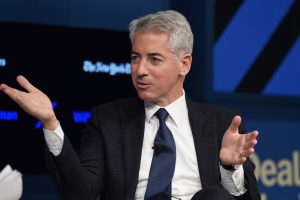A look at the day ahead in U.S. and global markets from Mike Dolan
A slightly exaggerated market reaction to Fed chair Jerome Powell’s pushback against early U.S. interest rate cuts was enough to spoil the weekend and keep the from extending an eighth straight daily gain.
Powell’s set-piece on Thursday clearly leaned more hawkish than investors had hoped – refusing to rule out another rate hike and saying the central bank was not yet confident its policy stance was restrictive enough to get inflation back to the 2% target.
“If it becomes appropriate to tighten policy further, we will not hesitate to do so,” Powell cautioned a market still betting both that rate hikes are done and that three cuts are coming next year, starting as soon as June.
Curiously, there was little change in that basic market pricing after Powell spoke – with end-2024 futures still pointing at a rate of 4.50-4.75% versus the current 5.25-5.50%.
But the Treasury market did suffer a bigger jolt – as they were also undermined by poor demand at the latest long bond auction. Two-year Treasury yields jumped more than 10 basis points on the day to more than 5%, with 10- and 30-year yields both jumping 12bps to 4.65% and 4.77% respectively.
The 30-year auction stopped at a high yield of 4.769%, higher than the market expected at the bid deadline, suggesting investors demanded a premium to take the bond. The rate miss of more than 5bps was the largest since August 2011 and the bid-to-cover ratio slipped.
More ominously, indirect bidders – including foreign central banks – only took 60.1%, their lowest share in two years.
The reason for such a poor auction, which happened before Powell spoke, was less clear.
The prospect of truncated bond trading on Friday due to early observance of Veterans’ Day may have had something to do with it. But others pointed to a ransomware attack on the U.S. arm of The Industrial and Commercial Bank of China, which reportedly disrupted trades in the Treasury market on Thursday.
There were also some background concerns about wider system liquidity. Fed efforts to drain liquidity from the financial system have pushed the amount of money parked daily at its ‘reverse repo’ facility below the $1 trillion mark for the first time since late summer 2021.
Whatever the main cause, fresh bond market jitters were enough to knock the S&P500 out of its winning streak and close almost 1% lower. That rippled through world markets overnight – although Wall St futures were steadier first thing Friday.
Attention now turns squarely to next week’s release of the October U.S. consumer price inflation report to see if Powell and Co can been swayed.
The dollar held its yield-bolstered gains on Friday, with dollar/yen creeping back further toward last-year’s peak just under 152.
Even though the latest British GDP number was slightly better than forecast, it showed zero economic growth in the third quarter – a stark contrast to what was happening in the United States. Sterling slipped.
China’s stocks also fell in the slipstream of the global markets retreat and the yuan eased back against a firmer dollar too. Embattled Country Garden is aiming to pull together a tentative plan to restructure offshore debt by the end of this year, according to Reuters’ sources.
U.S. Treasury Secretary Janet Yellen, meantime, began two days of meetings with Chinese Vice Premier He Lifeng on Thursday in a bid to limit the economic fallout from tensions between Washington and Beijing and keep the lines of communication open.
Key developments that should provide more direction to U.S. markets later on Friday:
* Some U.S. government offices observe early Veterans Day holiday, but stock exchanges open
* University of Michigan November U.S. consumer survey
* Dallas Federal Reserve President Lorie Logan, Atlanta Fed President Raphael Bostic speak; European Central Bank President Christine Lagarde and Bundesbank boss Joachim Nagel both speak
* EU Economic and Financial Affairs Council budget meeting
(By Mike Dolan, editing by Elaine Hardcastle [email protected]. Twitter: @reutersMikeD)
Read the full article here















